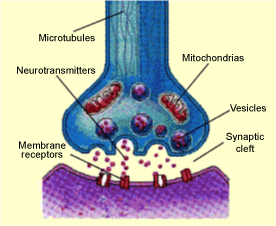 The term “drug addiction” is a disturbing word that brings to mind other words with equally unpleasant associations such as hopeless, out-of-control, desperate, inadequate, failure—you can no doubt add many more. Part of the reason the word is so upsetting is that for most people who try to overcome drug addiction, treatment options have been limited and often ineffective.
The term “drug addiction” is a disturbing word that brings to mind other words with equally unpleasant associations such as hopeless, out-of-control, desperate, inadequate, failure—you can no doubt add many more. Part of the reason the word is so upsetting is that for most people who try to overcome drug addiction, treatment options have been limited and often ineffective.
In fact, “conventional” drug addiction treatment programs have a success rate of 25% or less! One of the reasons I believe this to be the case is that these “conventional” programs do not adequately address the physiological basis of substance abuse; more specifically biochemical imbalances that occur in the brains of people with substance abuse issues. The good news is that solutions exist that do address these imbalances and offer hope to those seeking a more permanent solution.
According to Dr. C.E. Gant, author of “End Your Addiction Now”, “substance abuse problems are the result of biochemical imbalances that disrupt the normal workings of brain cells”. These imbalances are particularly important in the biochemistry of brain cells, or neurons. Neurons produce chemical substances called neurotransmitters (the brain’s messengers), and they control virtually every aspect of your life by communication with other cells.
Four key groups of “brain messengers” are related specifically to substance abuse. These particular messengers are vital to our ability to experience pleasure and satisfaction. The healthy functioning of these neurotransmitters is vital to our well-being and our ability to function in a productive manner. The four groups of neurotransmitters include endorphins and enkephalins, serotonin, GABA, and catacholamines.
1. Endorphins and enkephalins, two groups of structurally similar inhibitory neurotransmitters that are powerful natural pain relievers. (inhibitory means they block or slow up the communication between neurotransmitters) Drugs that mimic the actions of enkephalins include heroin and methadone.
2. Serotonin, an inhibitory neurotransmitter that exerts a soothing influence on unpleasant emotions and prevents us from overactions. Drugs that disrupt the normal action of serotonin is a class of prescription antidepressant drugs called SSRIs (Serotonin Selective Reuptake Inhibitors). This includes such drugs as Prozac and Zoloft. These drugs actually make the condition worse since the brain will reduce their natural production of serotonin. And when the SSRI use is stopped, symptoms of serotonin deficiency such as anxiety, irritability and rage return.
3. GABA, an inhibitory neurotransmitter (similar to serotonin) that helps alleviate anxiety and worry and influences intellectual activity. Alcohol and the prescription drugs Valium and Xanax are examples that artificially affect this neurotransmitter.
4. Catecholamines, a group of similar excitatory neurotransmitters that govern our abilities to pay attention and to experience excitement and pleasure. Dopamine is in this category and is known as the “euphoria” neurotransmitter. To cope better in life, people turn to stimulant drugs such as cocaine and Ritalin to try and increase the catecholamine neurotransmitters.
People who have abused the drugs that target these neurotransmitters are playing with fire. In the presence of these drugs the brain begins to change – often expecting artificial stimulation at greater and greater levels. If this stimulation is not available (as when a person tries to stop taking the drugs), the person will feel listless, depressed, and joyless.
But there is hope for individuals who have abused drugs. While abuse leads to imbalances of the neurotransmitters in the brain, proper nourishment of these brain messengers can restore them to healthy levels of functioning. If all of these neurotransmitters can be nourished naturally a person is likely to enjoy good physical and mental health. Properly nourishing these neurotransmitters is best accomplished through a combination of treatments that includes a program called the Orthomolecular Medicine approach.
In the 1980’s, Dr. Joan Mathews-Larson (author of “Seven Weeks to Sobriety”) was the first to show that the Orthomolecular Medicine approach, when added to a conventional psychosocial treatment model, could double and even triple the expected long-term recovery rates for alcohol and drug addicted people. (Long-term recovery is defined here as one to two years of abstinence from drugs and alcohol. This fact is important because it is easier to show short-term benefits).
This more “holistic” approach to the treatment of substance abuse is giving hope to many who had given up. Understanding the role of neurotransmitters and subsequently addressing the problem at the cellular and molecular levels using natural substances and treatments is consistent with long-term recovery and lasting success.
Learn more about an effective Drug Addiction Treatment program.
0 responses so far ↓
There are no comments yet...Kick things off by filling out the form below.
Leave a Comment